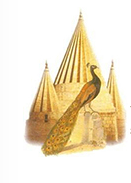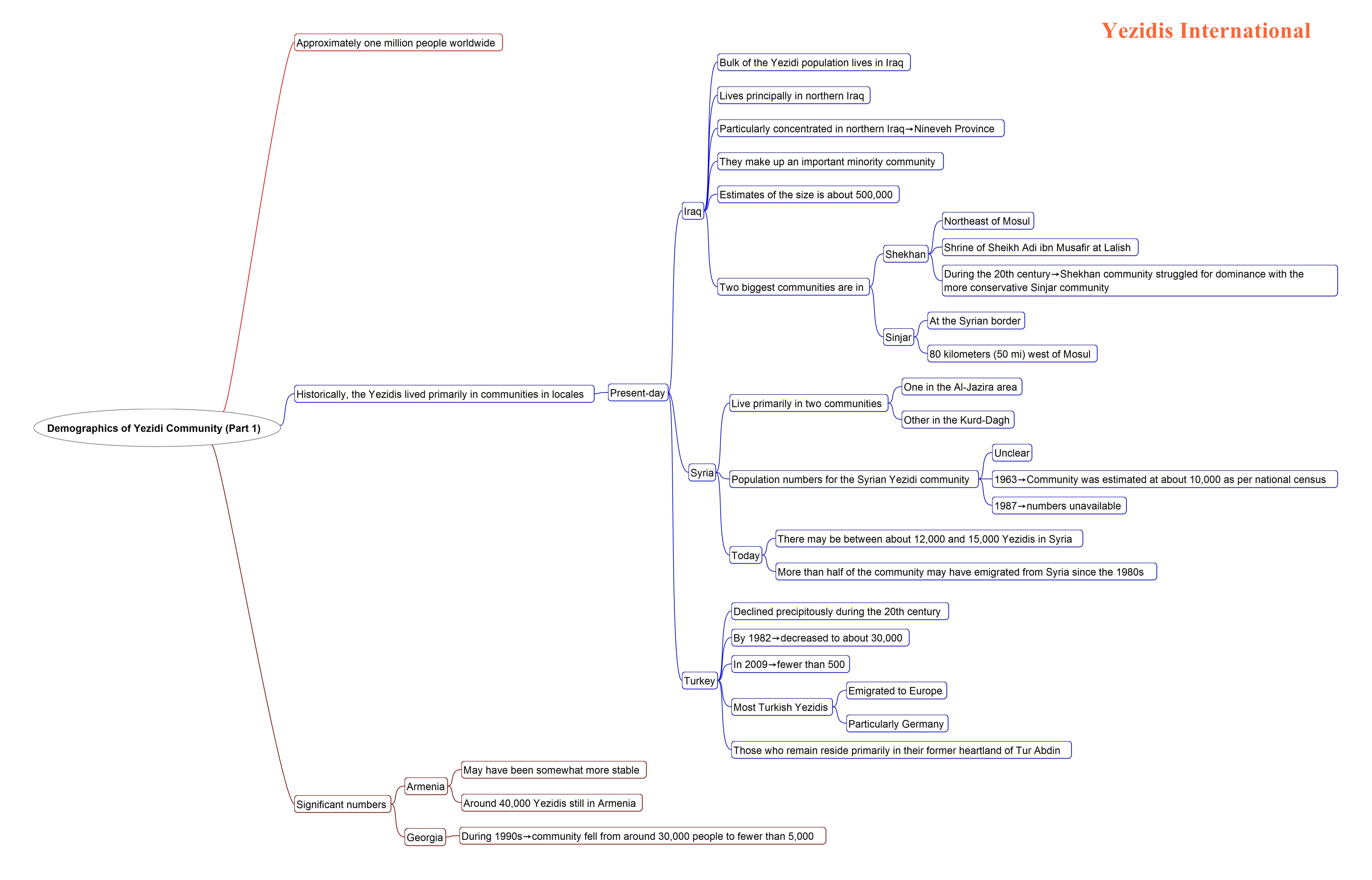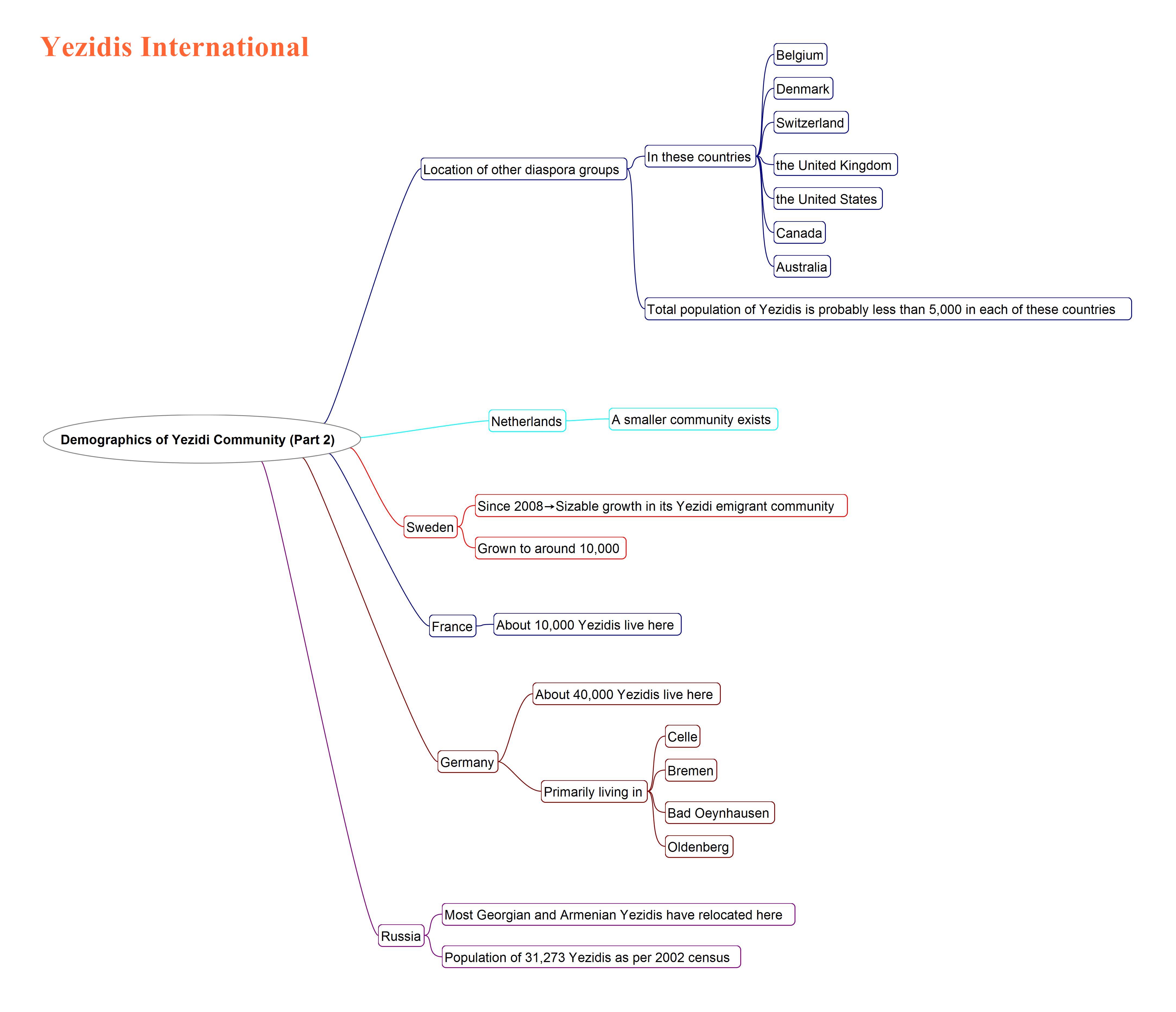Warning: Undefined variable $attachments in
/home/yezidisi98s/public_html/wp-content/plugins/sociable/includes/sociable_output.php on line
139
Who Are the Yezidis?
Demographics
The Yezidis (Yazidis) live principally in northern Iraq. There are approximately one million people worldwide. Historically, the Yezidis lived primarily in communities in locales that are in present-day Iraq, Syria, and Turkey, and also had significant numbers in Armenia and Georgia. However, events since the 20th century have resulted in considerable demographic shift in these areas as well as mass emigration. As a result, population estimates are unclear in many regions, and estimates of the size of the total population vary.
The bulk of the Yazidi population lives in Iraq, where they make up an important minority community. Estimates of the size is about 500,000. They are particularly concentrated in northern Iraq in the Nineveh Province. The two biggest communities are in Shekhan, northeast of Mosul, and in Sinjar, at the Syrian border 80 kilometres (50 mi) west of Mosul.
In Shekhan is the shrine of Sheikh Adi ibn Musafir at Lalish. During the 20th century, the Shekhan community struggled for dominance with the more conservative Sinjar community.
Yezidis in Syria live primarily in two communities, one in the Al-Jazira area and the other in the Kurd-Dagh. Population numbers for the Syrian Yezidi community are unclear. In 1963, the community was estimated at about 10,000, according to the national census, but numbers for 1987 were unavailable.There may be between about 12,000 and 15,000 Yezidis in Syria today, though more than half of the community may have emigrated from Syria since the 1980s.
The Turkish Yezidi community declined precipitously during the 20th century. By 1982 it had decreased to about 30,000, and in 2009 there were fewer than 500. Most Turkish Yezidis have emigrated to Europe, particularly Germany; those who remain reside primarily in their former heartland of Tur Abdin.
Population estimates for the communities in Georgia and Armenia vary, but they too have declined severely. In Georgia the community fell from around 30,000 people to fewer than 5,000 during the 1990s. The numbers in Armenia may have been somewhat more stable; there are around 40,000 Yezidis still in Armenia. Most Georgian and Armenian Yazidis have relocated to Russia,[9] which recorded a population of 31,273 Yazidis in the 2002 census.
This mass emigration has resulted in the establishment of large diaspora communities abroad. The most significant of these is in Germany, which now has a Yezidi community of over 30,000. Most are from Turkey and, more recently, Iraq and live in the western states of North Rhine-Westphalia and Lower Saxony.
Since 2008 Sweden has seen sizable growth in its Yazidi emigrant community, which had grown to around 10,000, and a smaller community exists in the Netherlands. Other diaspora groups live in Belgium, Denmark, France, Switzerland, the United Kingdom, the United States, Canada, and Australia; these have a total population of probably less than 5,000.
The Yezidi People
They are mostly a poor and oppressed people, but they have a rich spiritual tradition that they contend is the world’s oldest. They were the first people to be created in the Garden of Eden, which they claim is a large area centered in what is now known as Lalish in Iraq. A vestige of the Yezidis’ Garden of Eden era is reputed to be GobekliTepe, a recently discovered archaeological excavation in southern Turkey that has been dated to approximately 12,000 BCE.
During and after a great flood around 4000 BCE, the Yezidis dispersed to many countries in Asia, including India, Afghanistan, Armenia, and Morocco and possibly India. Returning from their adoptive countries around 2000 BCE the Yezidis played an important role in the development of the Assyrian, Babylonian and Jewish civilizations of the Middle East. Ultimately, the Yezidis amalgamated elements of all these civilizations into Yezidism, including certain features of the Zoroastrian religion of Persia.
The Yezidis have the oldest religion in the world, the truth of this is reflected in the antiquity of their calendar. They can trace back their religious calendar 6764 years, thus making 2008 CE the Yezidi year of 6764. In relation to some of the other major religions, the Yezidi Calendar is 4,750 years older than the Christian or Gregorian Calendar, 990 years older than the Jewish Calendar, and it is 5329 years older than the Muslim Calendar.
How You Can Support Yezidis International Instantly


















